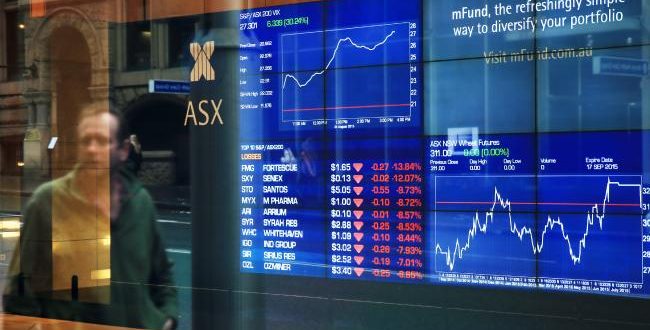The Australian sharemarket has ended in the red, hampered by weakness in the big banks and energy companies.
The former were weighed by a soft lead from offshore, while the latter were stragglers given sliding oil prices in Asian trade.
At the close, the benchmark S&P/ASX 200 index surrendered 20.7 points, or 0.36 per cent, to 5,778.9, while the broader All Ordinaries index backtracked 20.3 points, or 0.35 per cent, to 5,820.5.
The local market is expected to be driven by local forces in coming days after all eyes were fixated on the US Federal Reserve last week.
In the end a dovish US rate hike on Thursday pushed markets higher, with commodities the major beneficiaries.
Traders are now looking for the next catalyst to justify a further positive re-rating with stock levels “elevated”, according to CMC Markets chief market strategist Michael McCarthy.
“Asia Pacific markets could turn to regional data and events to drive markets this week,” he said.
“Topical house price and skilled vacancies data, and the release of RBA minutes, may see an inward looking approach from Australian investors.
“A number of sales and earnings releases will shed light on important sectors. Telco TPG, retailer Premier Investments, Sigma Pharmaceuticals and investor and manufacturer Brickworks will all contribute to the corporate outlook.”
None of those names were reporting on Monday, with traders largely devoid of market-moving news.
Instead, they focused on slowing momentum around commodities to push the big names in the resources sector lower.
In materials, Fortescue was steady at $6.70 and Rio Tinto slid 0.9 per cent to $62.39, while BHP Billiton bucked the trend to edge up 0.2 per cent to $24.88
In energy, Santos skidded 1.1 per cent to $3.69, while Woodside lost 0.5 per cent to $31.37 as crude prices lost more than half a per cent in Asian trade.
The big banks were largely in the red, headlined by a 0.5 per cent drop at ANZ.
CBA weakened 0.4 per cent and Westpac gave up 0.3 per cent, while NAB served as the outperformer in tacking on 0.4 per cent.
Among other blue chips, telco giant Telstra slumped 2.1 per cent to $4.66, while national carrier Qantas won 0.5 per cent to $3.81.
Meanwhile, the Australian dollar was trading around US77.3c , rising US0.3c through the local session on US dollar weakness.
“The US dollar itself, commodity prices such as iron and base metals, and investor risk appetite are all moving in a direction which supports this (recent) move to 77 cents,” Greg McKenna, chief market strategist at CFD and FX provider AxiTrader, said.
“At the moment, I’m watching the US dollar Index and the euro for clues. If support for those two currencies gives way, then the Aussie is likely to break through resistance and move higher.”
Reader comments on this site are moderated before publication to promote lively and civil debate. We encourage your comments but submitting one does not guarantee publication. We publish hundreds of comments daily, and if a comment is rejected it is likely because it does not meet with our comment guidelines, which you can read here. No correspondence will be entered into if a comment is declined.





